Changki Sung
PIDLoc: Cross-View Pose Optimization Network Inspired by PID Controllers
Mar 04, 2025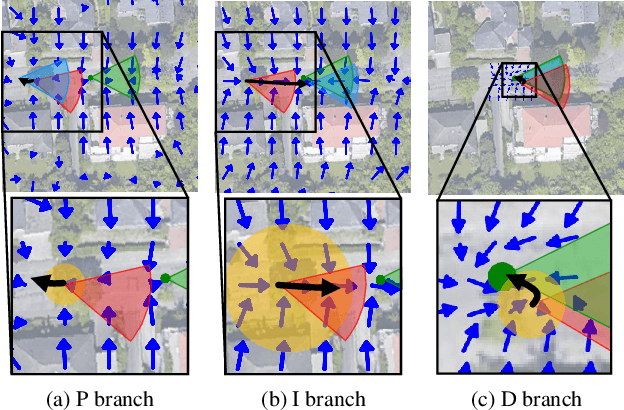
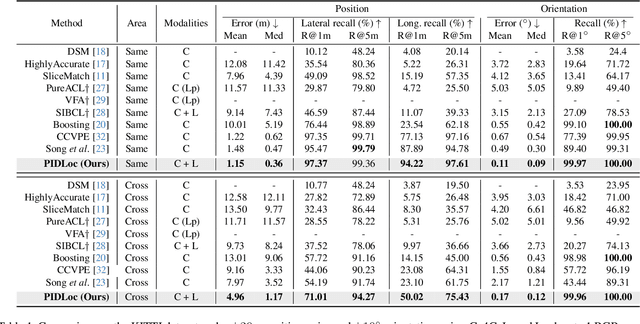

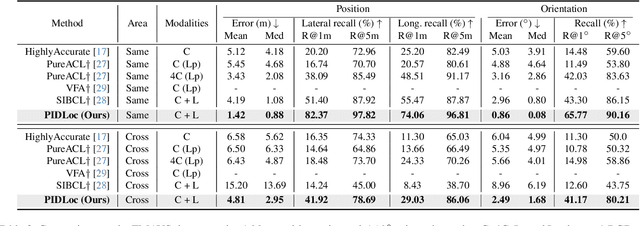
Abstract:Accurate localization is essential for autonomous driving, but GNSS-based methods struggle in challenging environments such as urban canyons. Cross-view pose optimization offers an effective solution by directly estimating vehicle pose using satellite-view images. However, existing methods primarily rely on cross-view features at a given pose, neglecting fine-grained contexts for precision and global contexts for robustness against large initial pose errors. To overcome these limitations, we propose PIDLoc, a novel cross-view pose optimization approach inspired by the proportional-integral-derivative (PID) controller. Using RGB images and LiDAR, the PIDLoc comprises the PID branches to model cross-view feature relationships and the spatially aware pose estimator (SPE) to estimate the pose from these relationships. The PID branches leverage feature differences for local context (P), aggregated feature differences for global context (I), and gradients of feature differences for precise pose adjustment (D) to enhance localization accuracy under large initial pose errors. Integrated with the PID branches, the SPE captures spatial relationships within the PID-branch features for consistent localization. Experimental results demonstrate that the PIDLoc achieves state-of-the-art performance in cross-view pose estimation for the KITTI dataset, reducing position error by $37.8\%$ compared with the previous state-of-the-art.
Contextrast: Contextual Contrastive Learning for Semantic Segmentation
Apr 16, 2024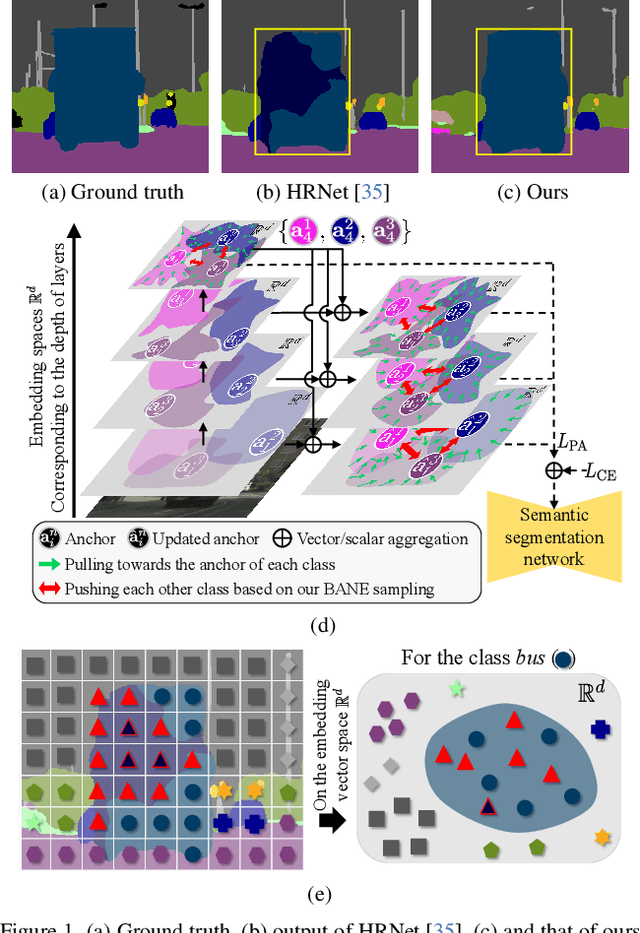

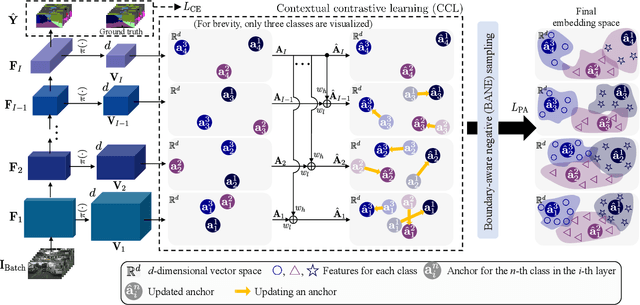

Abstract:Despite great improvements in semantic segmentation, challenges persist because of the lack of local/global contexts and the relationship between them. In this paper, we propose Contextrast, a contrastive learning-based semantic segmentation method that allows to capture local/global contexts and comprehend their relationships. Our proposed method comprises two parts: a) contextual contrastive learning (CCL) and b) boundary-aware negative (BANE) sampling. Contextual contrastive learning obtains local/global context from multi-scale feature aggregation and inter/intra-relationship of features for better discrimination capabilities. Meanwhile, BANE sampling selects embedding features along the boundaries of incorrectly predicted regions to employ them as harder negative samples on our contrastive learning, resolving segmentation issues along the boundary region by exploiting fine-grained details. We demonstrate that our Contextrast substantially enhances the performance of semantic segmentation networks, outperforming state-of-the-art contrastive learning approaches on diverse public datasets, e.g. Cityscapes, CamVid, PASCAL-C, COCO-Stuff, and ADE20K, without an increase in computational cost during inference.
X-MAS: Extremely Large-Scale Multi-Modal Sensor Dataset for Outdoor Surveillance in Real Environments
Dec 30, 2022



Abstract:In robotics and computer vision communities, extensive studies have been widely conducted regarding surveillance tasks, including human detection, tracking, and motion recognition with a camera. Additionally, deep learning algorithms are widely utilized in the aforementioned tasks as in other computer vision tasks. Existing public datasets are insufficient to develop learning-based methods that handle various surveillance for outdoor and extreme situations such as harsh weather and low illuminance conditions. Therefore, we introduce a new large-scale outdoor surveillance dataset named eXtremely large-scale Multi-modAl Sensor dataset (X-MAS) containing more than 500,000 image pairs and the first-person view data annotated by well-trained annotators. Moreover, a single pair contains multi-modal data (e.g. an IR image, an RGB image, a thermal image, a depth image, and a LiDAR scan). This is the first large-scale first-person view outdoor multi-modal dataset focusing on surveillance tasks to the best of our knowledge. We present an overview of the proposed dataset with statistics and present methods of exploiting our dataset with deep learning-based algorithms. The latest information on the dataset and our study are available at https://github.com/lge-robot-navi, and the dataset will be available for download through a server.
 Add to Chrome
Add to Chrome Add to Firefox
Add to Firefox Add to Edge
Add to Edge